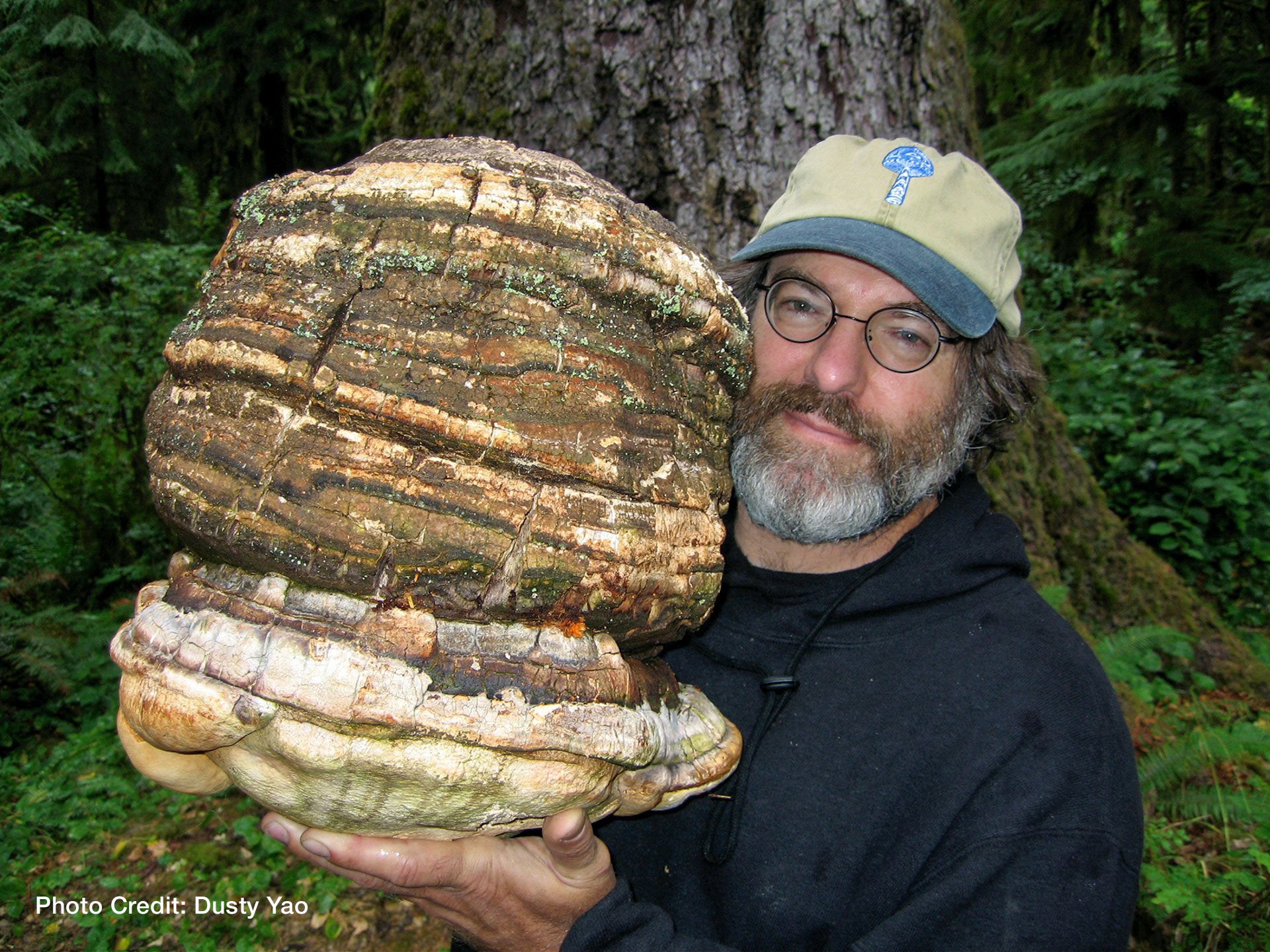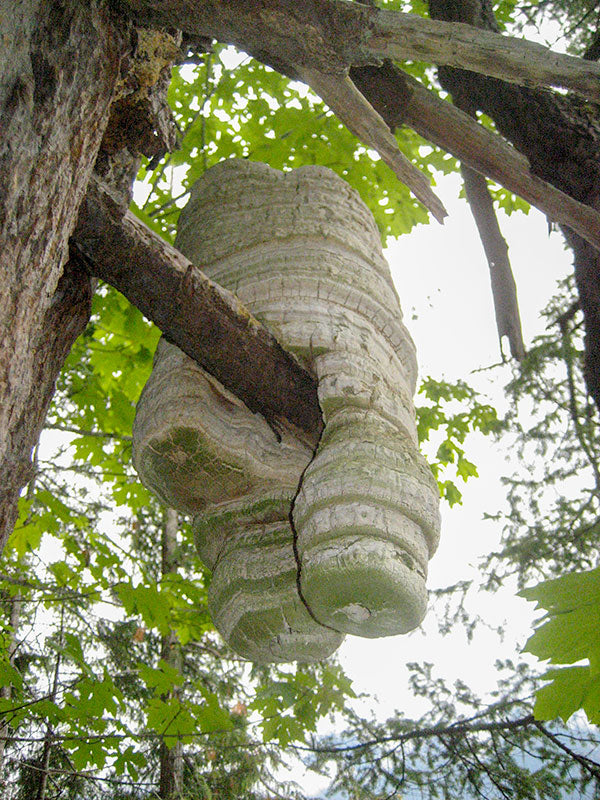
The Search for Agarikon
My current priority is culturing the fungal residents in old growth forests. One mushroom species in particular beckons me: Agarikon, Fomitopsis officinalis. This mushroom has been used medicinally for thousands of years, and known for centuries as “elixirium ad longam vitam” (“elixir of long life”). It is on the brink of extinction in Europe, but I have found specimens in the towering old growth forests of Washington State and British Columbia. Fomitopsis officinalis is exposed to hurricane force winds and hundreds of inches of rain per year, and defends itself against legions of parasitizing bacteria and other fungi, yet these mushrooms can live up to 75 years. What is the secret to Agarikon’s longevity, I wonder. Since humans are afflicted by many of the same microbes that harm mushrooms, we are learning a lot from studying Agarikon’s host defenses against pathogens. Having as many Agarikons in culture as possible is important, as medical science long ago discovered that strains differ in their ability to fend against microbial competitors. To date, we have isolated 27 strains of Agarikon, after decades of searching for this elusive species.

In August of 2008, we set out on an expedition in search of Agarikon on Canada’s west coast. We chartered The Misty Isles, a motor sailboat, and gathered a crew of field mycologists and research specialists in infectious diseases. Our intent was to scan the old growth forests on the shorelines of Desolation Sound, looking through binoculars for the characteristic living-snags of Douglas Fir trees where this rare mushroom can reside. After scanning thousands of trees, the prospects of finding Agarikon waned. Then, with a shout of surprise and relief, one of our team exclaimed, “There’s one!”
We zoomed to shore in a Zodiac inflatable, and scrambled up a bluff to find a ‘ghost form’ of Agarikon—appropriately named for its white chalk-like appearance—straddled across a branch.

What was so unusual about this specimen is that it appeared to have fallen from a spot farther up the tree, landed on its present supporting branch, and then connected to the mother mycelium that had infused the host tree, forming two downward legs. Scaling the tree, I reached out and carefully removed a small fingernail-sized sample of the mushroom tissue. Unfortunately, after much effort in the lab, the tissue did not revive, and so this Agarikon exists only in the wild. Although now dead, the ghost form can persist for decades, while the mycelium inside the tree can live much longer. In the future, we plan to return on another expedition to gather more specimens.
My mission is to collect and culture as many strains of Agarikon as possible. This species’ genomic diversity could be essential for its survival, and possibly ours as well. To date, Fungi Perfecti has spent countless hours and dollars creating the largest culture bank of this species in the world. This culture library may be the enduring achievement of my life’s research, reflecting hundreds of forays into these dream-like cathedral forests. We and our descendants may benefit from this work. We shall see…

